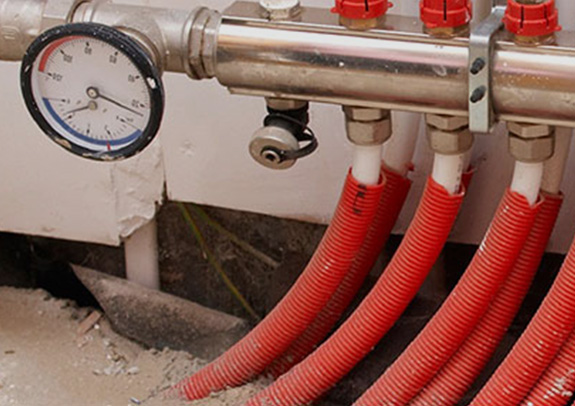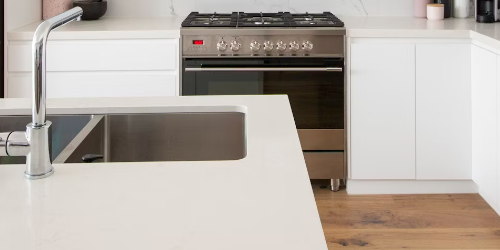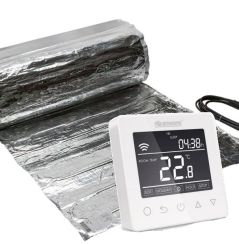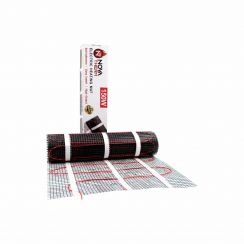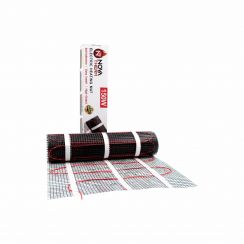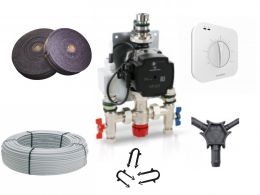Key Points:
- Underfloor heating in kitchens saves space by removing the need for radiators.
- Best flooring options include tiles, polished concrete, engineered wood, and rated laminate.
- Electric underfloor heating systems are ideal for kitchens; wet systems work well in larger spaces.
- Electric underfloor heating is cheaper for small kitchens; wet systems cost more but save energy.
Menu
- Whys Should You Install Underfloor Heating In a Kitchen?
- What Flooring Finish Is The Best For Kitchen Underfloor Heating?
- Which Underfloor Heating System Should You Use For Heating a Kitchen?
- How Much Does It Cost To Add Underfloor Heating To a Kitchen?
The kitchen is the heart of the home and is often the most-used room. It needs to be a space for cooking, entertaining, and relaxing. Underfloor heating is perfect for kitchens because it provides warmth without taking up any wall space, making it ideal for rooms with limited space for radiators.
Why Should you Install Underfloor Heating In A Kitchen?
Underfloor heating is perfect for kitchens due to its space-saving design and efficient warmth distribution. Unlike normal radiators, kitchen underfloor heating is installed beneath the floor and provides a space-saving heating solution that frees up walls for cabinets and other design or storage needs.
Key benefits of underfloor heating in kitchens include:
Consistent Comfort: underfloor heating eliminates cold spots across the entire floor, creating a cosy atmosphere without the need for bulky radiators.
Design Flexibility: With no need for wall-mounted radiators, you gain more flexibility in kitchen design and layout, allowing for a cleaner, more open space.
Efficient Heating: Electric underfloor heating systems are both cost-effective and energy-efficient. They provide gentle heat at lower temperatures, which helps reduce energy bills while maintaining a comfortable environment.
Enhanced Renovation Option: If you’re renovating, electric underfloor heating is a seamless addition that doesn’t raise floor height, making it an ideal choice for modernizing your kitchen without compromising style or function.
Underfloor heating in your kitchen offers Comfort, efficiency, and design freedom, which makes it an excellent choice for heating your kitchen in winter or summer.
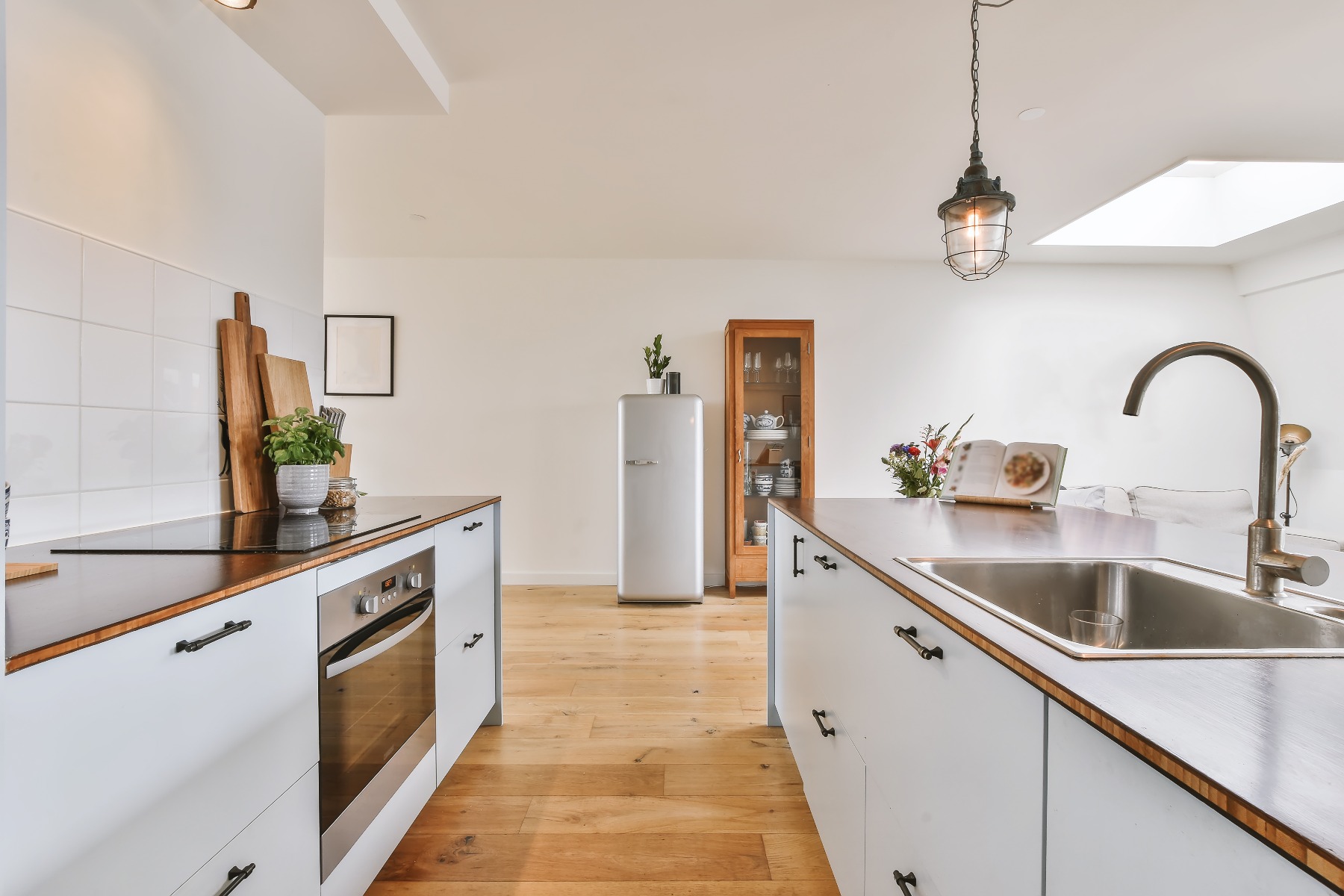
What Flooring finish is the best for kitchen underfloor heating??
When installing kitchen underfloor heating, it's important to choose materials that effectively conduct and retain heat. While underfloor heating kitchen systems are compatible with various flooring types, some materials perform better due to their thermal conductivity and heat tolerance.
Top Flooring Options for Underfloor Heating in Kitchens:
Tiles and Stone: Ceramic and porcelain tiles are ideal for underfloor heating because of their excellent heat conductivity. They can withstand higher temperatures (up to 86°F or 30°C) and are durable and low-maintenance. Tiled floors typically range from 10-12mm thick, making them perfect for efficient heat transfer. However, while effective, stone tiles may take longer to heat up due to their density.
Concrete: Polished concrete floors are another great choice for underfloor heating. They have excellent thermal mass and can retain and distribute heat evenly. Concrete's ability to absorb and radiate warmth makes it a strong contender for pairing with underfloor heating systems.
For more information on how to install underfloor heating on concrete floors, make sure you read this guide.
Wood: Wooden floors are compatible with underfloor heating, but they require careful selection. Engineered wood or laminate flooring is recommended, as these materials are less likely to expand or contract than solid wood. Choosing wood types compatible with underfloor heating is essential, as is ensuring the system operates at lower temperatures (up to 81°F or 27°C) to prevent any damage.
Laminate: High-quality laminate flooring designed for underfloor heating is a good option. Select laminate specifically rated for underfloor heating systems and adhere to manufacturer temperature guidelines to ensure optimal performance and longevity.
Flooring to Avoid: We recommend avoiding thick carpets and vinyl with high thermal resistance, as these materials can reduce the heating system's efficiency. Carpets and vinyl typically require special underlay or specific types to function effectively with underfloor heating.
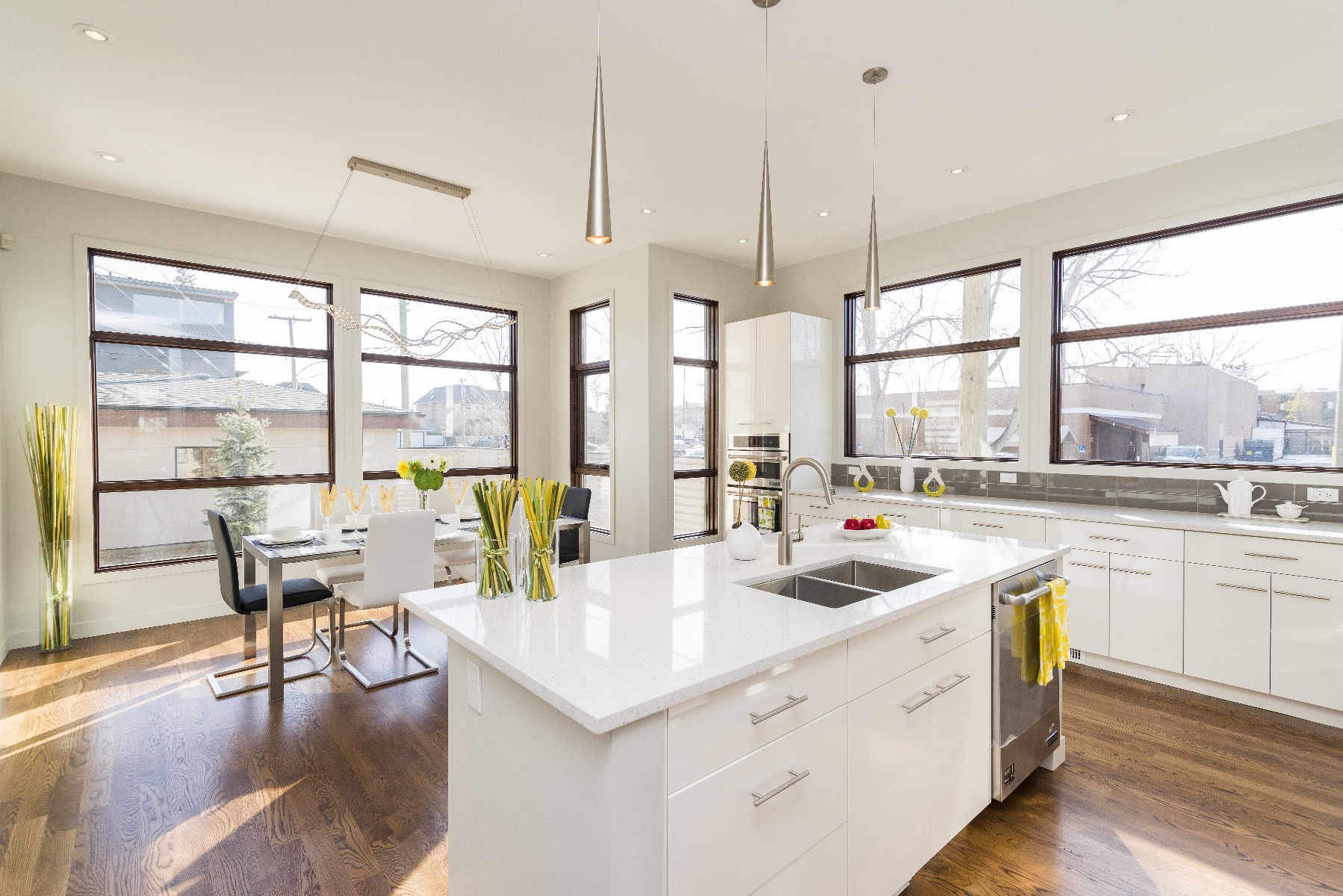
which underfloor heating system should you use for heating a kitchen?
When considering the best underfloor heating types for your kitchen, choosing a system that provides efficient and even warmth while being compatible with your flooring and kitchen layout is essential. Here's a breakdown of the most suitable underfloor heating options for kitchens:
Electric Underfloor Heating Systems:
1. Heating and Decoupling Membrane Systems
Heating and decoupling membrane systems are a top choice for kitchen underfloor heating. These systems incorporate a decoupling membrane that helps prevent tiled floors' cracking, lifting, and delamination. The membrane allows the tiled surface to move independently from the subfloor, particularly in kitchens where temperature fluctuations are typical. These systems also offer adjustable heating outputs by varying the spacing between the cables, allowing for customized warmth depending on your kitchen's insulation.
2. Mesh Mat (Heating Mat) Systems
Electric underfloor heating mats are another reliable option for kitchen underfloor heating. These systems feature heating cables pre-attached to a mesh laid directly under your kitchen floor. While they are easy to install, damage to the heating cables can occur when adhesive is applied. Opt for systems where the mesh is installed wire side down to provide additional protection during installation and ensure the longevity and efficiency of your heating system.
Wet Underfloor Heating Systems:
Water underfloor heating is ideal for larger spaces or new builds. Wet systems circulate warm water through pipes embedded in the floor, offering an energy-efficient solution with lower operating costs over time. Wet systems provide consistent heat and are compatible with various kitchen flooring options. However, the installation is more complex and may require raising the floor level.
Choosing the Right System:
The best underfloor heating for your kitchen depends on size, flooring type, and whether you're renovating or building new. Electric underfloor heating kits are highly recommended for their ease of installation and reliability in kitchen environments. Wet systems are also an excellent choice for larger spaces or projects where energy efficiency is a priority.
How much does it cost to add underfloor heating to a Kitchen?
Many homeowners assume installing underfloor heating in kitchens is costly and disruptive, but this isn’t necessarily true. The cost of installing underfloor heating in your kitchen depends on several factors, including the type of system (electric or wet), the size of your kitchen, and whether you opt for professional installation or a DIY approach.
Electric underfloor heating is typically more affordable for smaller kitchens and can often be installed as a DIY project, significantly reducing labour costs. On average, electric systems range from £30-£50 per square meter, with professional installation adding to the total cost.
Wet underfloor heating systems may be more cost-effective for larger kitchens or new builds in the long run. However, they come with higher upfront installation costs, typically ranging from £80-£150 per square meter, including installation. While wet systems require professional installation due to their complexity, they offer greater energy efficiency over time, potentially lowering heating costs in the long term.
New to Underfloor Heating?
Use below links to browse our key pages
Frequently Asked Questions
Is underfloor heating in a kitchen worth it?
Underfloor heating, especially electric underfloor heating, is an excellent choice for your kitchen. It’s energy-efficient, space-saving, easy to install and maintain, and compatible with various flooring types
Can you have underfloor heating under kitchen units?
It's a common misconception that underfloor heating installed beneath kitchen units will damage them or cause items in the cupboards to overheat. However, There have never been any issues with damage to units or the items stored inside.
What is the best way to heat a kitchen floor?
Installing underfloor heating is the most efficient way to heat a room, as it evenly warms the entire space from the ground up, allowing warm air to rise gradually. Underfloor heating not only takes the chill off cold floors but also reduces the need for multiple radiators.
What is the best flooring for a kitchen?
Given that the kitchen is a high-traffic area, it's important to choose a durable flooring material that can endure wear and tear. Consider options like ceramic or porcelain tiles, natural stone, or hardwood floors, which are robust enough to withstand foot traffic and heavy furniture.
Get A Bespoke Quote Today
You can now take advantage of our online quote system.
Just fill up a short form with your name, number, email and project details and we will get in touch with a bespoke quote for you.
